Chlorophytum is an herbaceous plant native to South America that has about 200 subspecies. And from the 19th century, the flower became famous in Europe. At home, only a few hybrid species of chlorophytum are grown, which not only have an unusual appearance, but are also unpretentious in care.
The plant is also known for purifying the air in the room and neutralizing dangerous microorganisms. In addition, it has a beautiful flowering, which can be observed from the beginning of spring to mid-autumn. Chlorophytum is easy to propagate by division and with the help of processes, and can be cut off at will.
For abundant flower growth, he needs constant moisture. The plant can be grown not only in the room, but also outdoors in a cache-pot in the warm season. It is also often used to create scenery along with other representatives of indoor flora.
Content
Characteristics of a houseplant chlorophytum
In its natural habitat, the flower prefers to grow on the bark of trees that are located in the shade. Chlorophytum belongs to the indoor herbaceous perennials of the Asparagus family and is often referred to as the green lily. The plant has a short ligneous stem that is not visible from under the leaves.
The leaves are narrow and long, can be bright green or have several colors, for example, cream and pale green. The flower has antennae, at the ends of which are rosettes. The leaves of the plant are directed downward and can reach 60-80 cm in length. The plant lives about 8-10 years at home. Very often in warm time, chlorophytum is planted in a pot and taken out into the street.
The period of active growth in the flower lasts from late winter to mid autumn, and its flowering can be observed from March to November. Flowers form at the ends of the antennae. Small white flowers with 6 long narrow petals grow from small buds. The buds are funnel-shaped and form small inflorescences. From one antennae, from 6 to 10 buds can grow.
Care for chlorophytum at home
Chlorophytum is distinguished by its unpretentiousness in care, however, in order for it to bloom profusely and actively grow, it is necessary to adhere to some recommendations.
The basic rules of growing
The conditions for keeping the flower also depend on the season. So, in spring and summer, the number of watering increases, and wiping and spraying the leaves should become regular procedures. The average temperature in the room is about +22 degrees, and in the morning and evening the pot is taken out to the balcony or to the street. The amount of sunlight remains the same.
In winter and autumn, the number of waterings is reduced, the flower does not require constant spraying, and the leaves are wiped only 1 time per week. The pot is placed in a cool room to stimulate growth after a period of rest.
The soil
First of all, the soil must be loose so that water and air easily penetrate. The acidity of the substrate must be neutral. To prepare such a soil, it is necessary to mix turf and deciduous soil, humus and sand. A thick layer of drainage is always placed in the pot in front of the soil layer.
Watering and feeding
Chlorophytum is a hygrophilous species. In the summer, the amount of watering should be several times a week.In the cold season, watering is reduced to 1 time in 7-10 days. However, it is necessary to water the plant as needed, focusing on the humidity of the surface layer of the substrate. So, excessive watering threatens to rot the root system, and drought can lead to drying of the ends of the leaves and falling.
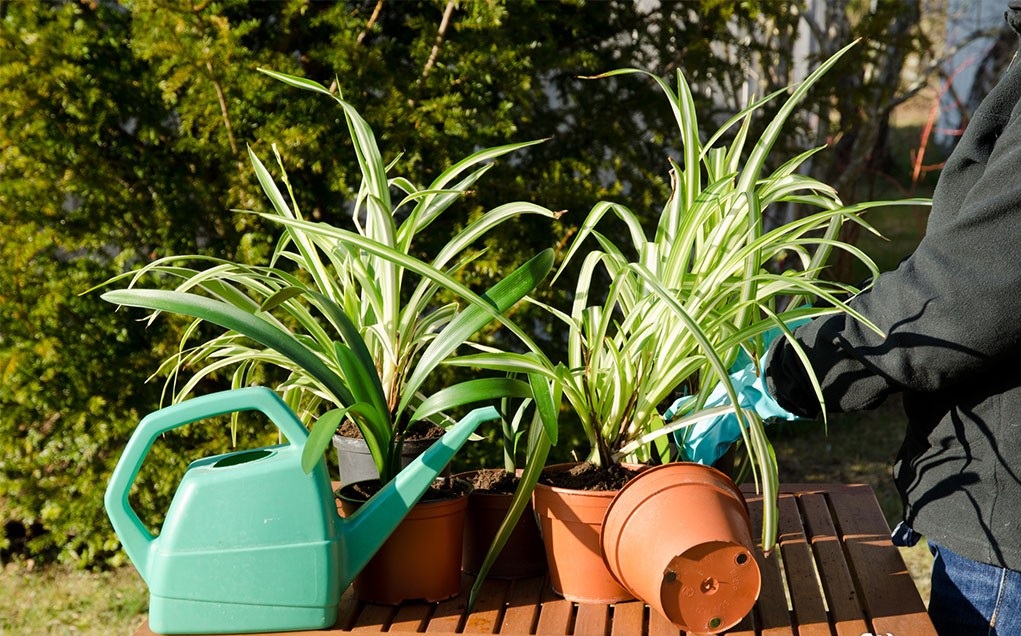
In order to determine the humidity of the substrate, it is necessary to stick a match there for half an hour. The degree of swelling of the match can be used to judge soil moisture. In addition, watering the plant is necessary only with warm and filtered water. Running water is hard, and the ions in its composition can harm chlorophytum.
Also, the flower likes a high level of moisture in the room. To maintain it, the plant is regularly wiped with warm water to remove dust, which accumulates to a greater extent in the center of the leaf. You can also wash the plant in the shower.
To do this, you need to build structures from a nylon cord and a small plastic container. A hole is made at the bottom of the tank and filled with water. After that, a nylon cord with a wooden stick is pulled into the pot through the drainage holes to the top layer of the earth. The plant is well watered so that the string is saturated with water and begins to supply moisture.
It is necessary to fertilize the plant during the period of active growth several times a month to accelerate the development of the flower. Feeding can be used any. Often a flower is watered with water from the aquarium to replenish the balance of nutrients. Adult plants do not need fertilizer.
Light and temperature
Chlorophytum is not whimsical to the amount of light received. It can be placed on any windowsill or in the back of the room, in partial shade. Most of all, in the warm season, the plant loves morning and evening sunlight, as direct rays can cause burns on the leaves. In spring and summer, the pot is best taken outside only in the morning or put it in the shade. A sufficient amount of light makes the leaves more saturated in color, and the plant itself becomes more lush and bushy.
In winter, it is better for him to provide a cool temperature, which should not fall below +10 degrees. Care must be taken to ensure that the pot is not standing in a draft or too close to hot batteries.
Breeding
Chlorophytum can be propagated by seed. To do this, the seeds are collected, dried and set aside until planting. This is best done in December. Seeds are soaked for 24 hours in potassium permanganate or in growth stimulants, after which they are planted in soil, which should consist of peat and sand.
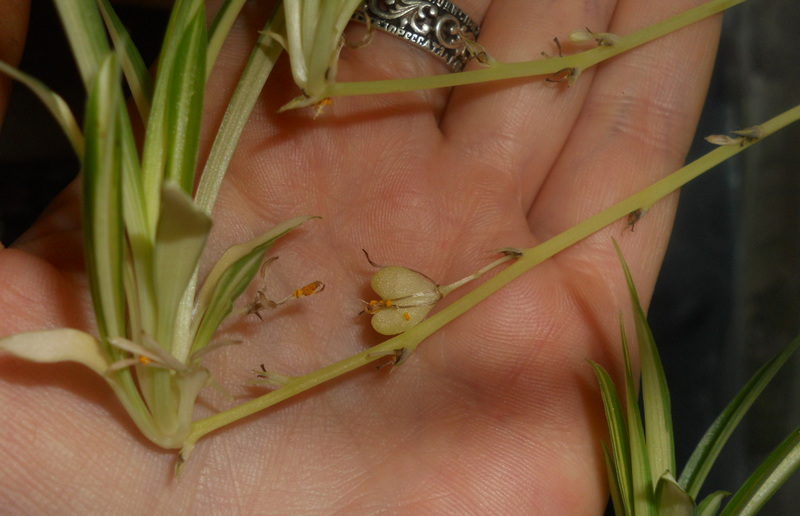
The soil is poured into a shallow container, the seeds are placed on the surface of the substrate and pressed a little, not sprinkled with earth. Then the container is covered with polyethylene or a lid and left in a warm place for several months until seedlings appear.
During this period, they are sprayed with water and open to ventilate. After more than 2-3 leaves appear on a young plant, it can be transplanted. This method is rarely used, because it has a small percentage of germination, however, it is effective in breeding.
Florists most often use the method of reproduction by the shoots. For its implementation, it is necessary to choose a small process with several leaves and roots and carefully separate it from the mother plant. The process is immersed halfway in a glass of warm water until the root system is fully developed. Water needs to be changed every week. After root formation, the flower is transplanted into a pot with a substrate. It can be propagated in this way at any time of the year.
Transfer
Transplantation into a new pot of large sizes is carried out annually only in young plants, in adults it can be done once every several years. A transplant must be carried out at the end of winter or the beginning of spring, until the flower begins to actively grow and throw buds.
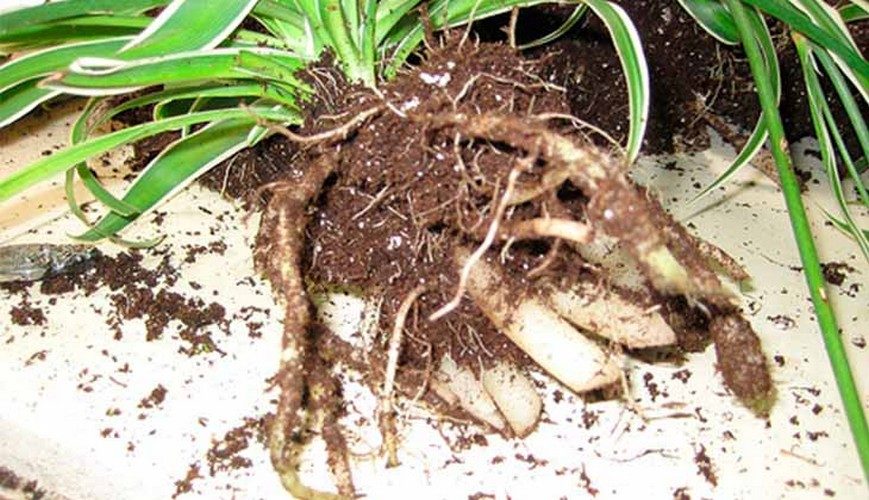
For transplanting, the plant is well poured with water in an old pot so that it is easier to get it. Gently pull out, brushing off the substrate. After this, you need to carefully inspect the roots for damage. At the bottom of the new pot, a thick layer of drainage is poured in the form of expanded clay, which is covered with prepared soil.
A small indentation is made in the ground where chlorophytum is transferred. After transplanting, the flower is watered. Experts do not recommend placing the pot immediately in the sun so that chlorophytum can adapt.
Causes of yellowing of leaves in chlorophytum and treatment methods
There are several reasons why the leaves of chlorophytum turn yellow. First of all, it should be noted that yellowing and falling of the lower layers of leaves is a normal process associated with aging. It is important to pay attention to the yellowing leaves from above.
If the leaves first fade and lose their bright green hue, after which they already turn yellow, we can talk about a lack of light. To solve this problem, put the pot on the sunny side and make sure that it receives enough light. In winter, you can use the lamp. However, it is worthwhile to ensure that in the summer burns do not appear on the leaves.
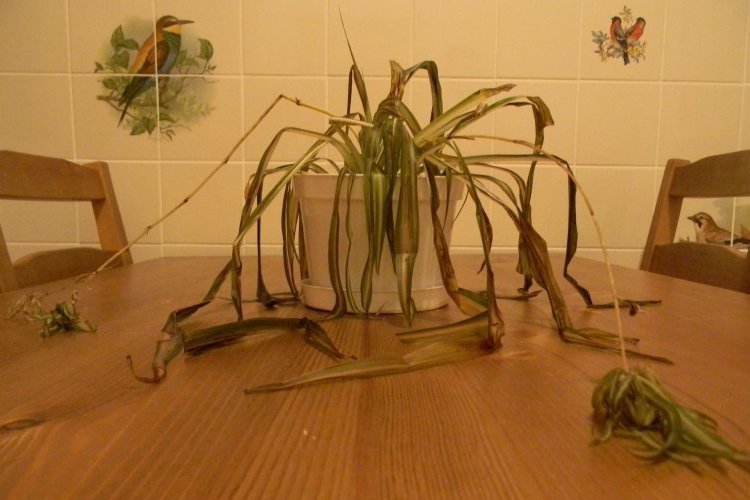
Yellowing also occurs due to a lack of minerals, which is offset by fertilizer application. Yellowing may occur with a small pot.
With a sharp yellowing of the lower leaves, it is necessary to reconsider the watering. Most likely, this indicates excessive watering. It may also mean that the roots of the plant began to rot. To fix the problem, the flower is pulled out of the pot, the damaged roots are cut and transplanted into new soil.
Yellowing and drying of the leaves at the tips indicates insufficient humidity in the room. Therefore, such a chlorophytum should be wiped and sprayed more often with warm water.
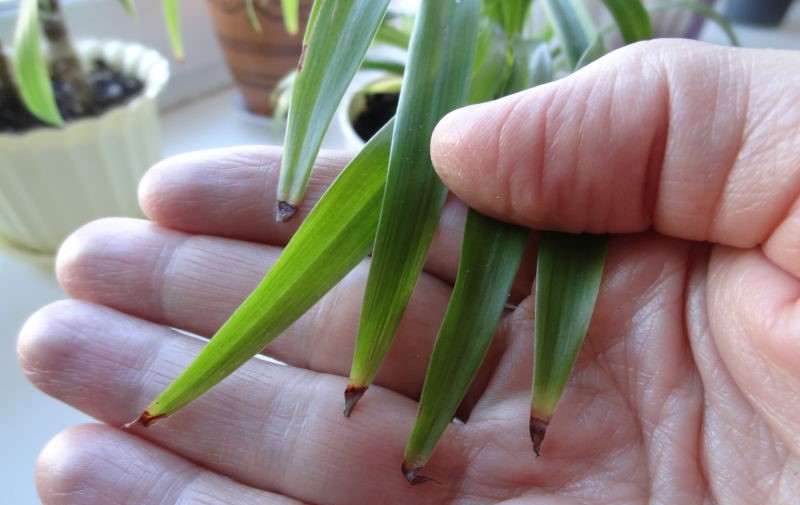
If the leaves dry after yellowing, this indicates insufficient moisture in the soil. The frequency of watering should depend on the moisture content of the substrate, therefore it should not be allowed to dry.
The leaves can turn yellow from too high a temperature in the room. The optimum temperature for the content is + 18-24 degrees. Such a plant must be taken to the loggia and more often sprayed with warm water.
In addition, this may be a sign of mechanical damage to the leaf. In this case, you just need to carefully remove it.
Is it possible to keep a chlorophytum flower at home
Chlorophytum is very often planted as a houseplant due to the large number of its beneficial properties.
Good for home
It is important to note that chlorophytum is called a filter at home. Thanks to the chemicals in its composition, the plant easily neutralizes dust and harmful microorganisms in the room. Scientists have proved that a flower can purify the air within a radius of several meters, because in order to keep the apartment clean it will be enough to have several flowers.
In addition, the plant has the ability to fix harmful chemicals. The faster it grows, the more harmful substances are in the air. So, it was scientifically proven that the air around the plant is absolutely sterile. Nicotine and tar, which are contained in the smoke of cigarettes, are best absorbed by the plant. Chlorophytum can fully grow in a place with an excess of carbon dioxide and carbon monoxide.
Chlorophytum not only cleans, but also moisturizes the air.To enhance this ability, crushed activated carbon is placed in the pan of the pot. Also, the leaves must be thoroughly washed and sprayed, especially their central part.
Chlorophytum is a fighter with negative energy in the house. According to the teachings of Feng Shui, the plant not only absorbs energy, but also contributes to the transformation of man and brings changes to the life of the owners of the house. Experts say that due to its cleansing properties, the flower removes the negative impact of toxins and microorganisms on a person, which makes him balanced, calm and improves the emotional background.
Possible harm
Do not allow the consumption of flower leaves, as they can damage the mucous membrane of the oral cavity. Cats eat leaves to get rid of lumps of wool in the stomach. To fix this problem, the cat needs to plant special cat grass, since chlorophytum is poisonous to animals.
Common flower growing questions
Chlorophytum is a type of houseplant that attracts attention with its bright greenery and delicate white flowers. The plant is not only a good decoration for the home, but also an excellent air purifier from dust and bacteria. A flower can also become a resident of cottages and open verandas in the summer, if it is transplanted into a pot.

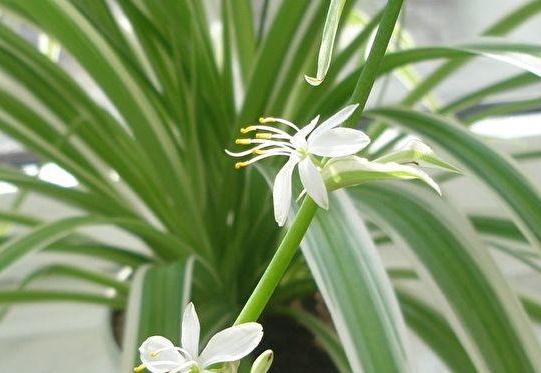
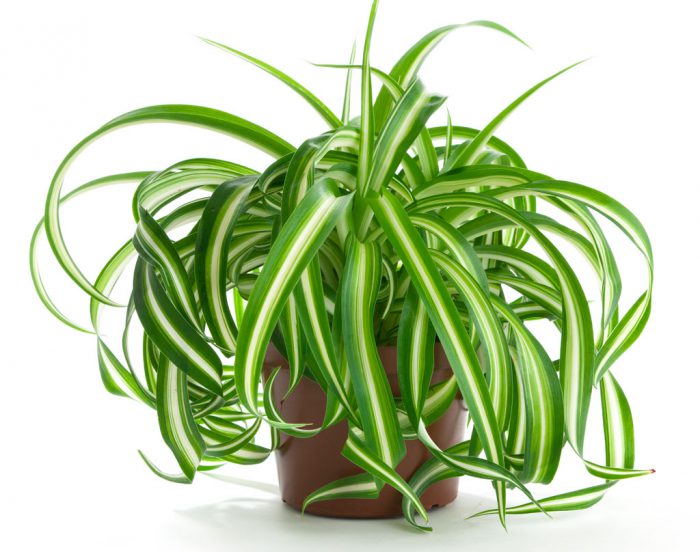
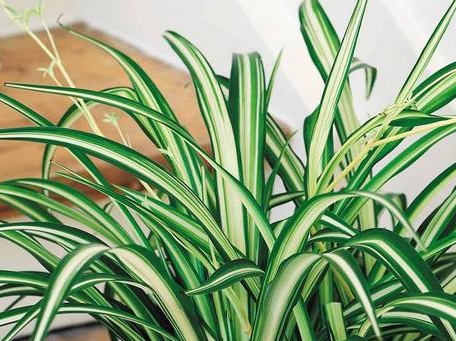
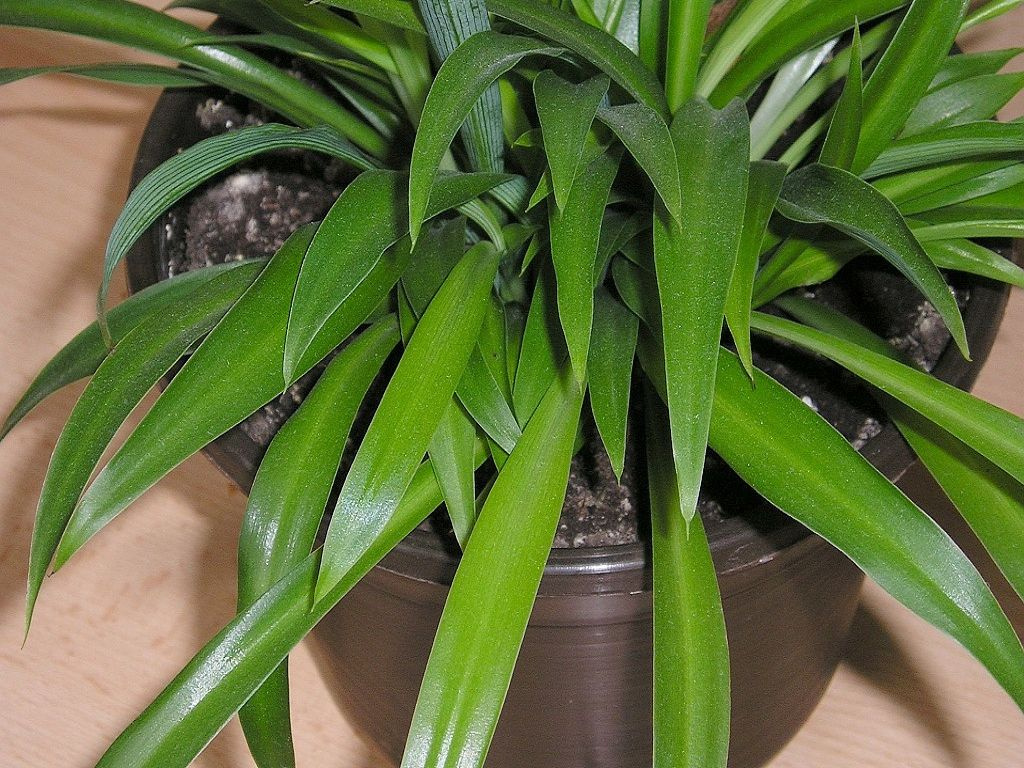
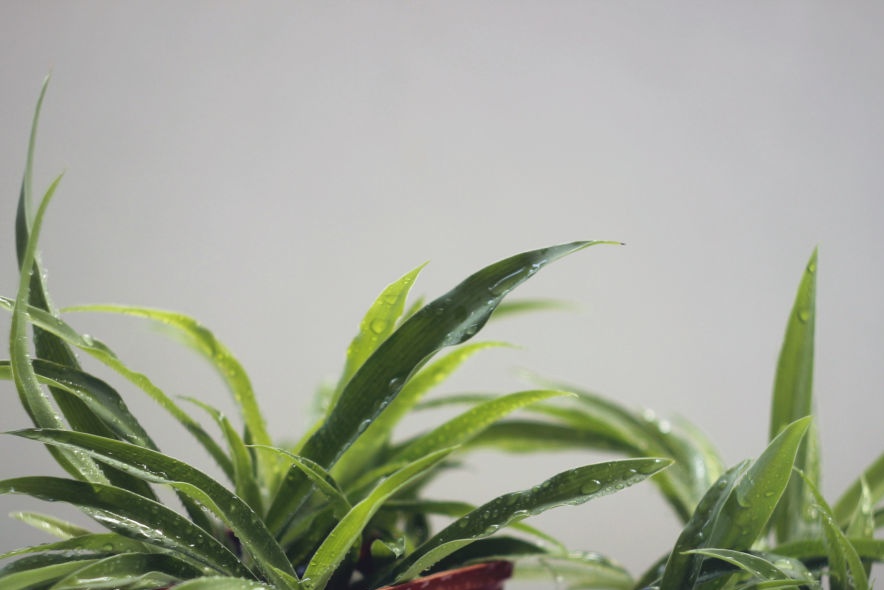
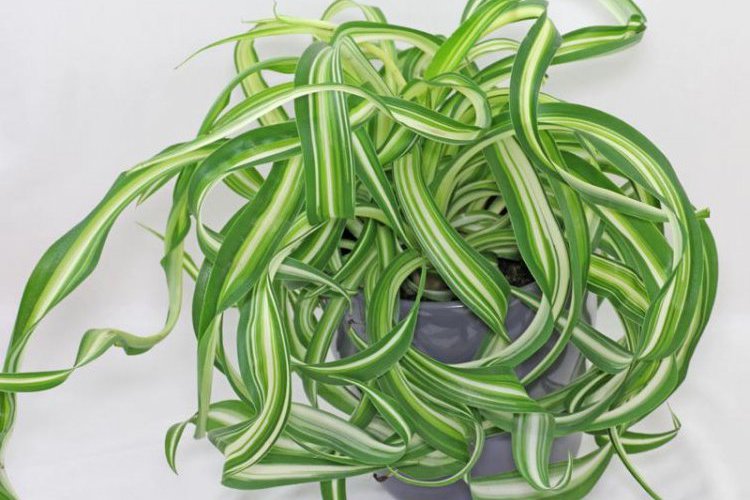



 10 beautiful annuals that bloom all summer
10 beautiful annuals that bloom all summer Sow in the ground, without seedlings: 10 beautiful and unpretentious flowers
Sow in the ground, without seedlings: 10 beautiful and unpretentious flowers Platicodon planting and outdoor care
Platicodon planting and outdoor care Hosta - planting and care in the open ground in the Urals
Hosta - planting and care in the open ground in the Urals